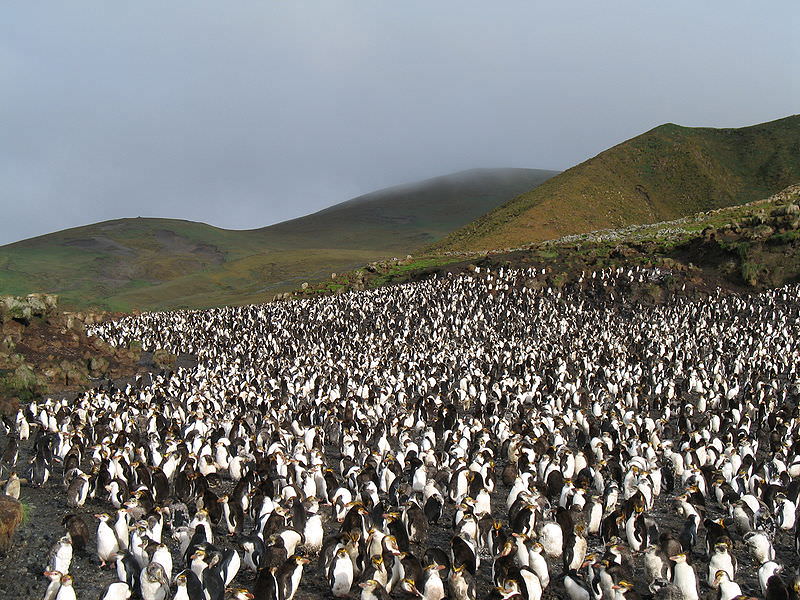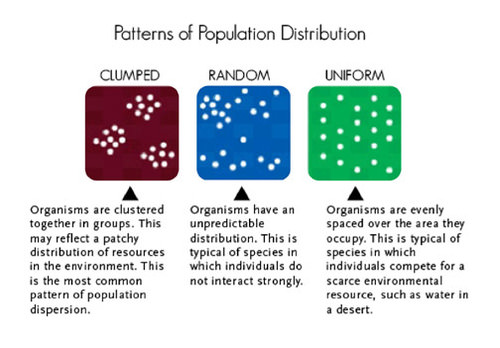6.8: Population
- Page ID
- 12136
\( \newcommand{\vecs}[1]{\overset { \scriptstyle \rightharpoonup} {\mathbf{#1}} } \)
\( \newcommand{\vecd}[1]{\overset{-\!-\!\rightharpoonup}{\vphantom{a}\smash {#1}}} \)
\( \newcommand{\dsum}{\displaystyle\sum\limits} \)
\( \newcommand{\dint}{\displaystyle\int\limits} \)
\( \newcommand{\dlim}{\displaystyle\lim\limits} \)
\( \newcommand{\id}{\mathrm{id}}\) \( \newcommand{\Span}{\mathrm{span}}\)
( \newcommand{\kernel}{\mathrm{null}\,}\) \( \newcommand{\range}{\mathrm{range}\,}\)
\( \newcommand{\RealPart}{\mathrm{Re}}\) \( \newcommand{\ImaginaryPart}{\mathrm{Im}}\)
\( \newcommand{\Argument}{\mathrm{Arg}}\) \( \newcommand{\norm}[1]{\| #1 \|}\)
\( \newcommand{\inner}[2]{\langle #1, #2 \rangle}\)
\( \newcommand{\Span}{\mathrm{span}}\)
\( \newcommand{\id}{\mathrm{id}}\)
\( \newcommand{\Span}{\mathrm{span}}\)
\( \newcommand{\kernel}{\mathrm{null}\,}\)
\( \newcommand{\range}{\mathrm{range}\,}\)
\( \newcommand{\RealPart}{\mathrm{Re}}\)
\( \newcommand{\ImaginaryPart}{\mathrm{Im}}\)
\( \newcommand{\Argument}{\mathrm{Arg}}\)
\( \newcommand{\norm}[1]{\| #1 \|}\)
\( \newcommand{\inner}[2]{\langle #1, #2 \rangle}\)
\( \newcommand{\Span}{\mathrm{span}}\) \( \newcommand{\AA}{\unicode[.8,0]{x212B}}\)
\( \newcommand{\vectorA}[1]{\vec{#1}} % arrow\)
\( \newcommand{\vectorAt}[1]{\vec{\text{#1}}} % arrow\)
\( \newcommand{\vectorB}[1]{\overset { \scriptstyle \rightharpoonup} {\mathbf{#1}} } \)
\( \newcommand{\vectorC}[1]{\textbf{#1}} \)
\( \newcommand{\vectorD}[1]{\overrightarrow{#1}} \)
\( \newcommand{\vectorDt}[1]{\overrightarrow{\text{#1}}} \)
\( \newcommand{\vectE}[1]{\overset{-\!-\!\rightharpoonup}{\vphantom{a}\smash{\mathbf {#1}}}} \)
\( \newcommand{\vecs}[1]{\overset { \scriptstyle \rightharpoonup} {\mathbf{#1}} } \)
\( \newcommand{\vecd}[1]{\overset{-\!-\!\rightharpoonup}{\vphantom{a}\smash {#1}}} \)
\(\newcommand{\avec}{\mathbf a}\) \(\newcommand{\bvec}{\mathbf b}\) \(\newcommand{\cvec}{\mathbf c}\) \(\newcommand{\dvec}{\mathbf d}\) \(\newcommand{\dtil}{\widetilde{\mathbf d}}\) \(\newcommand{\evec}{\mathbf e}\) \(\newcommand{\fvec}{\mathbf f}\) \(\newcommand{\nvec}{\mathbf n}\) \(\newcommand{\pvec}{\mathbf p}\) \(\newcommand{\qvec}{\mathbf q}\) \(\newcommand{\svec}{\mathbf s}\) \(\newcommand{\tvec}{\mathbf t}\) \(\newcommand{\uvec}{\mathbf u}\) \(\newcommand{\vvec}{\mathbf v}\) \(\newcommand{\wvec}{\mathbf w}\) \(\newcommand{\xvec}{\mathbf x}\) \(\newcommand{\yvec}{\mathbf y}\) \(\newcommand{\zvec}{\mathbf z}\) \(\newcommand{\rvec}{\mathbf r}\) \(\newcommand{\mvec}{\mathbf m}\) \(\newcommand{\zerovec}{\mathbf 0}\) \(\newcommand{\onevec}{\mathbf 1}\) \(\newcommand{\real}{\mathbb R}\) \(\newcommand{\twovec}[2]{\left[\begin{array}{r}#1 \\ #2 \end{array}\right]}\) \(\newcommand{\ctwovec}[2]{\left[\begin{array}{c}#1 \\ #2 \end{array}\right]}\) \(\newcommand{\threevec}[3]{\left[\begin{array}{r}#1 \\ #2 \\ #3 \end{array}\right]}\) \(\newcommand{\cthreevec}[3]{\left[\begin{array}{c}#1 \\ #2 \\ #3 \end{array}\right]}\) \(\newcommand{\fourvec}[4]{\left[\begin{array}{r}#1 \\ #2 \\ #3 \\ #4 \end{array}\right]}\) \(\newcommand{\cfourvec}[4]{\left[\begin{array}{c}#1 \\ #2 \\ #3 \\ #4 \end{array}\right]}\) \(\newcommand{\fivevec}[5]{\left[\begin{array}{r}#1 \\ #2 \\ #3 \\ #4 \\ #5 \\ \end{array}\right]}\) \(\newcommand{\cfivevec}[5]{\left[\begin{array}{c}#1 \\ #2 \\ #3 \\ #4 \\ #5 \\ \end{array}\right]}\) \(\newcommand{\mattwo}[4]{\left[\begin{array}{rr}#1 \amp #2 \\ #3 \amp #4 \\ \end{array}\right]}\) \(\newcommand{\laspan}[1]{\text{Span}\{#1\}}\) \(\newcommand{\bcal}{\cal B}\) \(\newcommand{\ccal}{\cal C}\) \(\newcommand{\scal}{\cal S}\) \(\newcommand{\wcal}{\cal W}\) \(\newcommand{\ecal}{\cal E}\) \(\newcommand{\coords}[2]{\left\{#1\right\}_{#2}}\) \(\newcommand{\gray}[1]{\color{gray}{#1}}\) \(\newcommand{\lgray}[1]{\color{lightgray}{#1}}\) \(\newcommand{\rank}{\operatorname{rank}}\) \(\newcommand{\row}{\text{Row}}\) \(\newcommand{\col}{\text{Col}}\) \(\renewcommand{\row}{\text{Row}}\) \(\newcommand{\nul}{\text{Nul}}\) \(\newcommand{\var}{\text{Var}}\) \(\newcommand{\corr}{\text{corr}}\) \(\newcommand{\len}[1]{\left|#1\right|}\) \(\newcommand{\bbar}{\overline{\bvec}}\) \(\newcommand{\bhat}{\widehat{\bvec}}\) \(\newcommand{\bperp}{\bvec^\perp}\) \(\newcommand{\xhat}{\widehat{\xvec}}\) \(\newcommand{\vhat}{\widehat{\vvec}}\) \(\newcommand{\uhat}{\widehat{\uvec}}\) \(\newcommand{\what}{\widehat{\wvec}}\) \(\newcommand{\Sighat}{\widehat{\Sigma}}\) \(\newcommand{\lt}{<}\) \(\newcommand{\gt}{>}\) \(\newcommand{\amp}{&}\) \(\definecolor{fillinmathshade}{gray}{0.9}\)
Is this any way to live?
It is if you're a penguin. This population of penguins is made of all the individuals of the same species of penguins who live together. They seem to exist in a very crowded - or densely populated - environment, and in a random configuration.
Population Size, Density, and Distribution
Communities are made up of populations of different species. In biology, a population is a group of organisms of the same species that live in the same area. The population is impacted by natural selection and evolution. How large a population is and how fast it is growing are often used as measures of its health.
Population Size
Population size is the number of individuals in a population. For example, a population of insects might consist of 100 individual insects, or many more. Population size influences the chances of a species surviving or going extinct. Generally, very small populations are at greatest risk of extinction. However, the size of a population may be less important than its density.
Population Density
Population density is the average number of individuals in a population per unit of area or volume. For example, a population of 100 insects that live in an area of 100 square meters has a density of 1 insect per square meter. If the same population lives in an area of only 1 square meter, what is its density? Which population is more crowded? How might crowding affect the health of a population?
Population Distribution
Population density just represents the average number of individuals per unit of area or volume. Often, individuals in a population are not spread out evenly. Instead, they may live in clumps or some other pattern (see Figure below). The pattern may reflect characteristics of the species or its environment. Population distribution describes how the individuals are distributed, or spread throughout their habitat.
 Patterns of Population Distribution. What factors influence the pattern of a population over space?
Patterns of Population Distribution. What factors influence the pattern of a population over space?Further Reading
Population Structure
Summary
- Population size is the number of individuals in a population.
- Population density is the average number of individuals per unit of area or volume.
- The pattern of spacing of individuals in a population may be affected by the characteristics of a species or its environment.
Review
- What is population density?
- What are the differences between population density and distribution?
- A population of 820 insects lives in a 1.2-acre area. They gather nectar from a population of 560 flowering plants. The plants live in a 0.2-acre area. Which population has greater density, the insects or the plants? Why?
- What can you infer about a species that has a random pattern of distribution over space? A uniform pattern?
| Image | Reference | Attributions |
 |
[Figure 1] | Credit: CK-12 Foundation;Hana Zavadska Source: CK-12 Foundation License: CC BY-NC 3.0 |
 |
[Figure 2] | Credit: CK-12 Foundation;By (Image: James Gathany, CDC) - A New Model for Predicting Outbreaks of West Nile Virus. Gross L, PLoS Biology Vol. 4/4/2006, e101. http://dx.doi.org/10.1371/journal.pbio.0040101. See also: Kilpatrick AM, Kramer LD, Jones MJ, Marra PP, Daszak P (2006) West Nile Virus Epidemics in North America Are Driven by Shifts in Mosquito Feeding Behavior. PLoS Biol 4(4): e82 doi:10.1371/journal.pbio.0040082, CC BY 2.5, https://commons.wikimedia.org/w/inde...?curid=1441809 Source: CK-12 Foundation ; By (Image: James Gathany ; CDC) - A New Model for Predicting Outbreaks of West Nile Virus. Gross L ; PLoS Biology Vol. 4/4/2006 ; e101. See also: Kilpatrick AMdx.doi.org/10.1371/journal.pbio.0040101. ; Kramer LD ; Jones MJ ; Marra PP ; Daszak P (2006) West Nile Virus Epidemics in North America Are Driven by Shifts in Mosquito Feeding Behavior. PLoS Biol 4(4): e82 doi:10.1371/journal.pbio.0040082 ; CC BY 2.5 ; commons.wikimedia.org/w/index.php?curid=1441809 License: CC BY-NC 3.0 |

